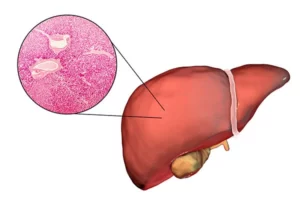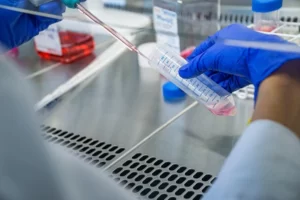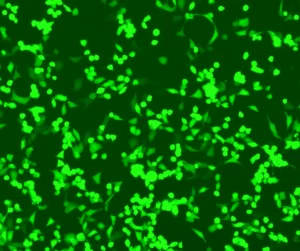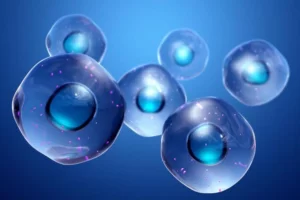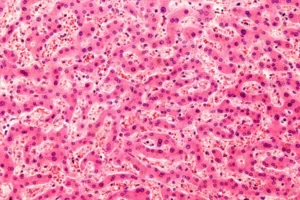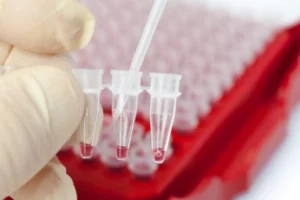Cell-based assays play a central role in the development of safe and effective cell therapies. They serve as methods for quantifying the potency of cell therapies, providing readouts for a broad spectrum of cell therapy characteristics, and are essential throughout the process from initial screening to safety and efficacy testing and dosage optimization1,2. Researchers employ a wide range of advanced cell-based assays in determining cell therapy characteristics, including growth assays, killing assays, metabolic profiling, xenograft models, and molecular profiling3–7. However, despite their critical importance, the application of these assays is fraught with challenges that hinder productivity and impede the progress of cell therapy development, highlighting the need for innovative solutions, like Levitation Technology, to streamline the pathway to therapeutic breakthroughs.
Common challenges in cell-based assays: the snowball effect
Poor-quality starting material is a primary cause of failure in cell-based assays, characterized by samples containing cells of suboptimal viability, dead or dying cells, and toxic debris. Utilizing low-quality input material undermines research reproducibility and data validity and can trigger a cascade of adverse effects impacting the assay and associated project8.
To compensate for the reduced viability and quality of the input material, more cells must be loaded into each well, which becomes particularly problematic when dealing with primary samples or difficult-to-culture cells. Additionally, more biological replicates are required to offset failed attempts and subpar outcomes. Each additional replicate incurs further expense, stretches resources, and demands more hands-on time, leading to lower testing throughput and extended development timelines. Even when experiments are completed under these conditions, the results are often highly variable, and data analysis becomes more complex, further affecting the project’s efficiency and deadlines9.
Ultimately, starting with low-quality material expands the scope and cost of projects and diminishes confidence in the outcomes, presenting a significant hurdle to the success of cell therapy projects. Consequently, scientists urgently need effective strategies to overcome these challenges and increase research productivity and outcomes.
Improved sample preparation increases productivity
Overcoming these significant challenges and enhancing the productivity of cell therapy workflows requires an approach that deals with the root of the problem: sample preparation. A comprehensive approach is needed that addresses several key factors:
- Viability. One of the most critical factors in improving cell-based assay outcomes is improving the viability of cells entering the assay by eliminating dead or dying cells in a gentle separation process that does not further impact viability10,11.
- Debris removal. Aside from skewing viability measurements, the presence of dead cells, debris, and other toxic stimulators can cause high background noise, generate misleading signals, and potentially obscure critical information12,13.
- Gentle sample preparation. Applying a gentle cell separation approach that does not impact cell viability or integrity, change gene expression, or alter cell population profiles is essential14,15.
- Efficiency. When selecting the most appropriate sample preparation method for improving lab productivity, efficiency must be prioritized.
Historically, the most commonly used cell separation techniques have involved centrifugation, bead, bubble, and fluorescence-activated cell sorting (FACS) approaches16–19. Despite their utility, each of these methods has considerable limitations that exacerbate the previously outlined challenges. For example, bead, bubble, and FACS techniques require cell labeling, introducing additional, time-intensive steps into the protocol and posing the risk of cytotoxicity. Furthermore, these methods often fail to eliminate debris from the samples. Centrifugation, conversely, does not require labeling and is capable of removing debris, yet by nature, it places significant stress on the cells, adversely affecting their viability20.
Addressing these limitations is crucial for cell-based work and for in vivo models – enhancing efficiency in cultivating cells for patient-derived xenograft (PDX) models, improving outcomes and timelines in cell-based assays, maximizing research ROI, and ultimately boosting productivity in cell therapy research and development.
The answer to increasing productivity – Levitation Technology
In a bid to overcome the challenges posed by existing cell separation processes, LevitasBio developed Levitation TechnologyTM, which offers an efficient means of separating cells, substantially improving the outcomes of cell-based assays and boosting productivity. By utilizing a paramagnetic solution within a magnetic field, this technology levitates live cells, distinguishing them from dead or dying cells without the need for labels. Levitation Technology effectively removes debris from samples, yielding data with an improved signal-to-noise ratio compared to other separation methods.
In contrast to conventional methods that can impair cell viability and integrity through harsh treatments such as dyes or centrifugation, Levitation Technology offers a gentle alternative. It minimizes cell stress and preserves cell integrity, allowing researchers to enrich for viable cells and major cell-specific subpopulations. Utilizing these high-quality cells in applications such as cell-based assays, CRISPR transductions, or PDX models leads to higher efficiencies, better model growth, and superior assay outcomes. Using high-quality cells or input material opens the door to using fewer cells per reaction. This translates to either testing a wider range of conditions or possibly working with smaller sample sizes.
Moreover, the improved starting material quality means that every sample can be used as a data point, and less filtering or data correction is required in downstream analysis. This significantly shortens timelines, enhances data validity, and avoids wasted resources and research funds. This is particularly crucial in applications like single-cell RNA sequencing, where the analysis of each individual cell is critical, or in drug dosing assays, which demand low variability and clean results across time points to accurately determine a drug’s response. By enriching for high viability and removing contaminants, this maximizes every dollar spent on sequencing and yields high-quality results. The LeviCell® platform enables researchers to achieve all these benefits through three simple steps that can be completed in just 20 minutes.
Conclusions
Cell-based assays are indispensable for developing effective and safe cell therapies, providing crucial insights into therapeutics’ potency, characteristics, and optimal dosages. The challenges that stem from poor-quality cell input can limit the entire development process by necessitating increased resources, time, and financial investment while also compromising the accuracy and reliability of results. Levitation Technology offers a much-needed solution for cell therapy researchers by enhancing cell viability and reducing assay variability. This method leads to improved productivity, efficiency, and reliability. Ultimately, Levitation Technology ensures the generation of high-quality samples, yields better results, and faster turn around in development time which can lead to more effective development of cell therapies. To learn more about how LevitasBio’s LeviCell® platform can help you increase productivity and output in cell-based assays, get in touch with one of our expert team members today!

